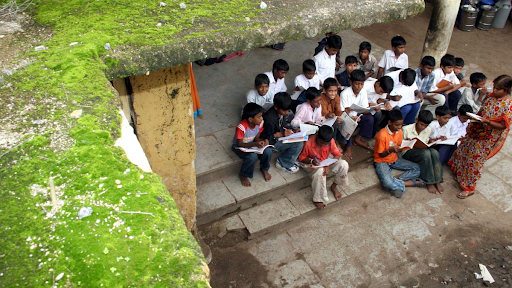



The ILO's World Employment and Social Outlook report indicates a slow global labour market recovery due to economic slowdown and COVID-19 impacts. India's GDP growth in Southern Asia supports overall GDP growth. Recommendations include boosting productivity, investing in skills training, education, infrastructure, and local development.

Copyright infringement not intended
Picture Courtesy: Internationalrelationnews
The International Labour Organization (ILO) has released the World Employment and Social Outlook: Trends 2025 in Geneva, Switzerland.
The main finding is that the global labour market recovery is slow due to the ongoing global economic slowdown, which is making it harder for labour markets to fully recover from the impacts of the COVID-19 pandemic.
India is pushing the growth in Southern Asia. The report highlighted that India’s GDP is anticipated to grow by 6.4% in 2025, due to its strong domestic demand, public investment, and monetary policy easing. India's growth supports the overall GDP growth of 5.8% in 2025 in the region.
In 2024, global employment grew in line with the labour force, which kept the unemployment rate constant at 5%. However, youth unemployment remained high at 12.6%, and informal work and working poverty returned to pre-pandemic levels.
Challenges in the labour market
Geopolitical tensions, the rising costs of climate change and unresolved debt issues are the main challenges before the recovery and the reasons for setting labour markets under pressure.
The inflation has decreased, but it remains high, reducing the value of wages. Real wages have only increased in some developed economies, and most countries are still recovering from the effects of the pandemic and inflation.
The labour force participation rates have dropped in low-income countries while increasing in high-income nations, mainly among older workers and women, however, gender gaps remain broad, with fewer women in the workforce, limiting progress in living standards.
The global jobs gap (estimated number of people who want to work but do not have a job) have reached 402 million, which includes 186 million unemployed people.
The ILO report recommends boosting productivity, investing in skills training, education, and infrastructure to support economic growth and job creation. It also advises expanding social protection, providing better access to social security, and using private funds, such as remittances, to support local development.
The ILO Director-General stressed that decent work and productive employment are essential for achieving social justice and the Sustainable Development Goals. He called for quick action to tackle labour market challenges and create a fairer, more sustainable future.
The report provides a detailed analysis of global labour markets, highlighting key trends like the slow recovery, persistent youth unemployment, and the widening jobs gap. It also outlines the challenges and offers recommendations to address these issues for sustainable development and social justice.
Must Read Articles:
INTERNATIONAL LABOUR ORGANISATION
Source:
|
PRACTICE QUESTION Q.How does the unorganized sector in India contribute to the socio-economic development of the country? 150 words |






© 2025 iasgyan. All right reserved